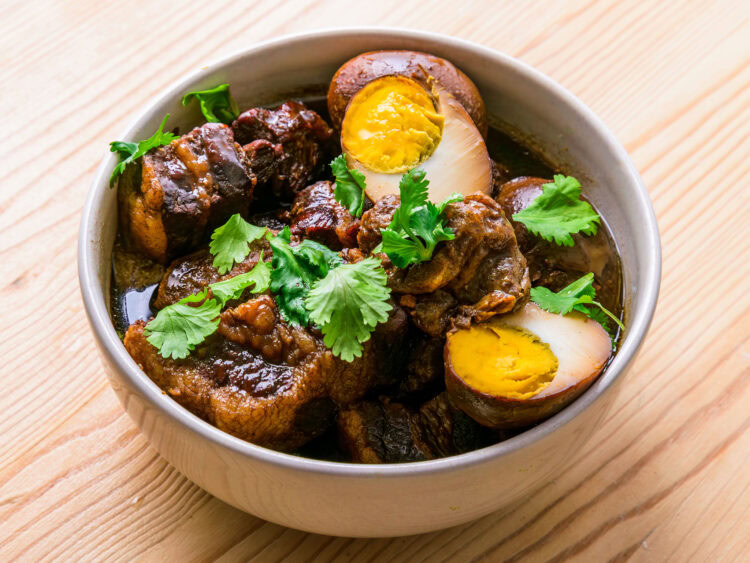A savory Thai stew of pork belly, eggs, and tofu, scented with spices and soy sauce, simmered until tender.
As soon as the palm sugar hits the hot oil, it turns into a dark, nutty caramel that coats the pot. A few seconds later, star anise and cinnamon release an aroma that is both medicinal and gently sweet.
Most Thai children know exactly what’s next : moo palo, the pork-and-egg stew that gently simmers on the stove. Beyond simple comfort, this dish embodies the Sino-Thai affinity, a centuries-old crossroads where Teochew technique meets local ingredients. Connoisseurs will recognize a resemblance to the Vietnamese thit kho, or to Chinese red-braised pork—no surprise, Moo Palo belongs to the delicious family of braised pork dishes.
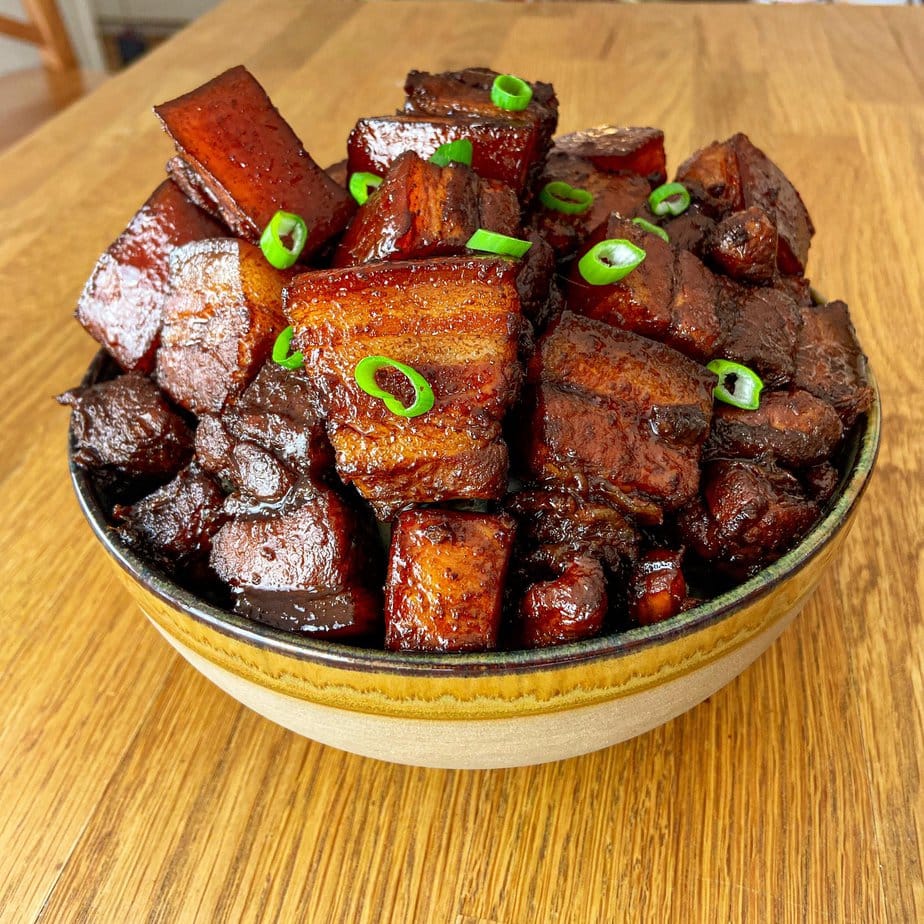
From Hokkien–Teochew pa-lo to a national comfort dish
At the end of the 19th century, Teochew merchants speaking the Hokkien–Teochew dialect arrived in Siam with a technique called pa-lo (拍滷/滷) : caramelizing sugar and then simmering meat in a soy-and-spice broth. In Thai markets, the word became “พะโล้”.
The stew, however, soon ceased to be exclusively Chinese. Palm sugar replaced the Chinese brown sugar. This swap brought a smoky, caramel note unique to the tropics. In the same spirit, fish sauce joined light and dark soy sauce, adding a touch of maritime umami that is distinctly Thai.
By the mid-20th century, Thai cookbooks had codified the recipe : pork belly for richness, hard-boiled eggs for substance, fried tofu, light and porous, to absorb the sauce. Slow cooking became doctrine, summed up by the saying “ยิ่งต้มนานยิ่งอร่อย” (“The longer it simmers, the more delicious it is”).
What began as a Hokkien family dish became woven into everyday life in Bangkok, served both at market stalls and in home kitchens.
Ingredients and techniques for Moo Palo
Three ingredients usually herald a pot of moo palo : pork belly with the skin on, cut into thick cubes; peeled hard-boiled eggs; and, in most recipes, fried tofu, light and porous. Everything else plays a supporting role.
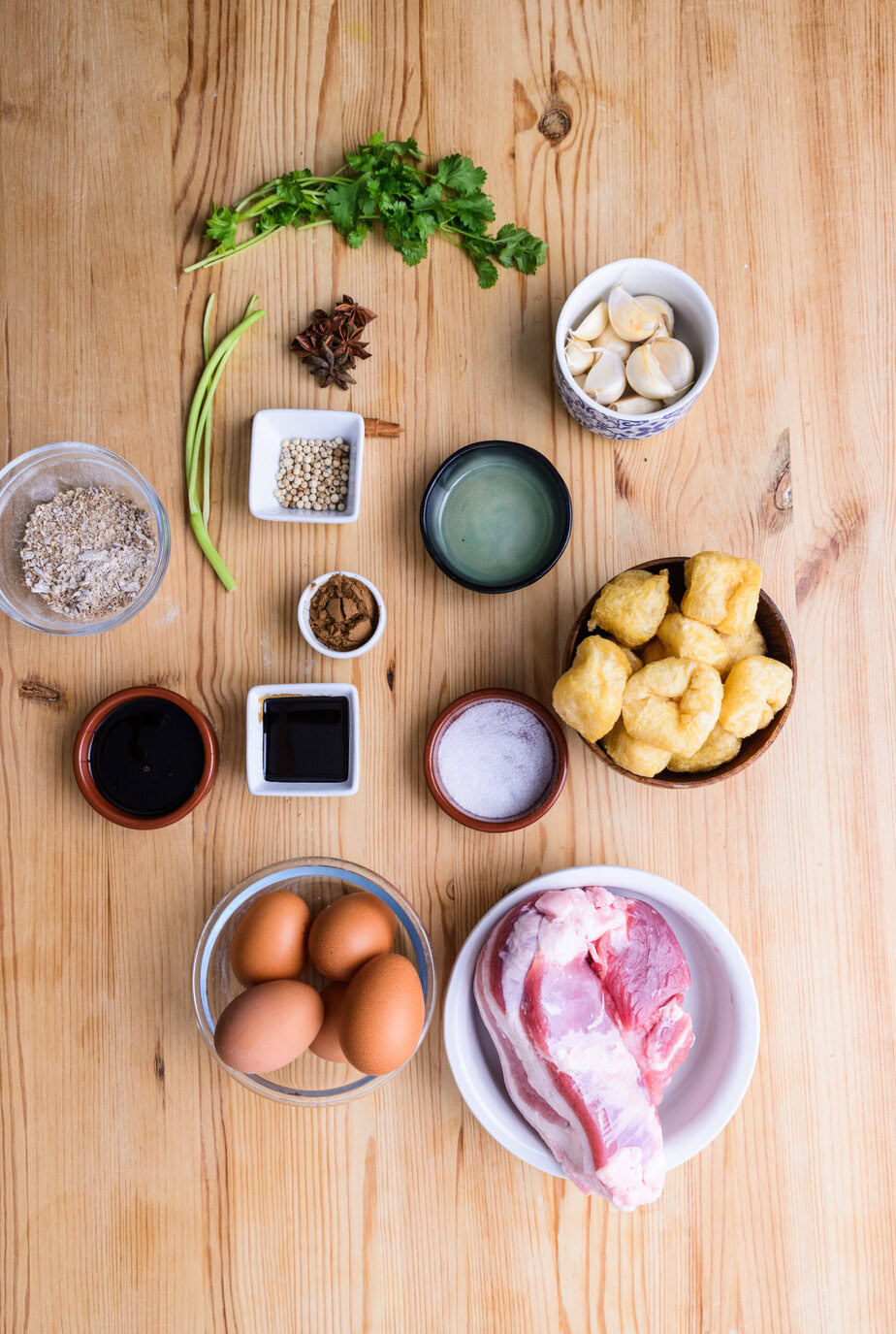
Flavor begins with sam kluea, a pounded paste of coriander roots, garlic, and white peppercorns. Cooks fry this paste until the kitchen is perfumed with earthy, peppery aromas. Then comes the palm sugar, which melts to the edge of bitterness and gives the broth its mahogany tint along with a subtle, coffee-like note.
Once the caramel is deglazed with water or stock, star anise and one or two sticks of cinnamon slip into the pot to perfume the gentle simmer. A measured pinch of five-spice is optional. Never add lemongrass, galangal, or makrut lime leaves : their bright notes would clash with the stew’s warm bass tones.
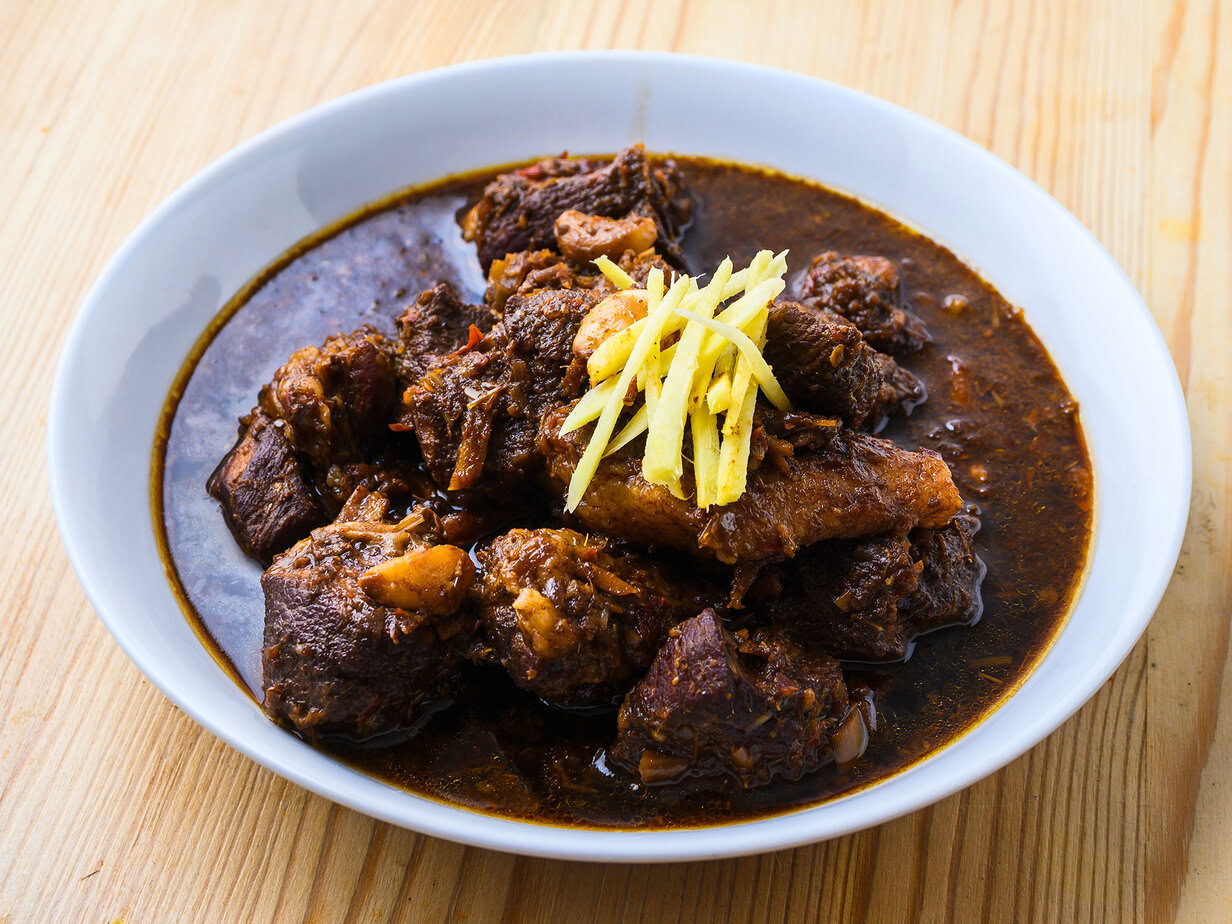
The seasoning triangle is indispensable : palm sugar for immediate sweetness, light soy sauce and fish sauce for saltiness, dark soy sauce for color and a hint of molasses. The pork cubes are usually browned (or at least coated) in the caramel, right in the same pot—no extra pan needed. A gentle simmer of one to two hours makes the belly spoon-tender while letting the eggs take on flavor until their whites turn the shade of polished teak.
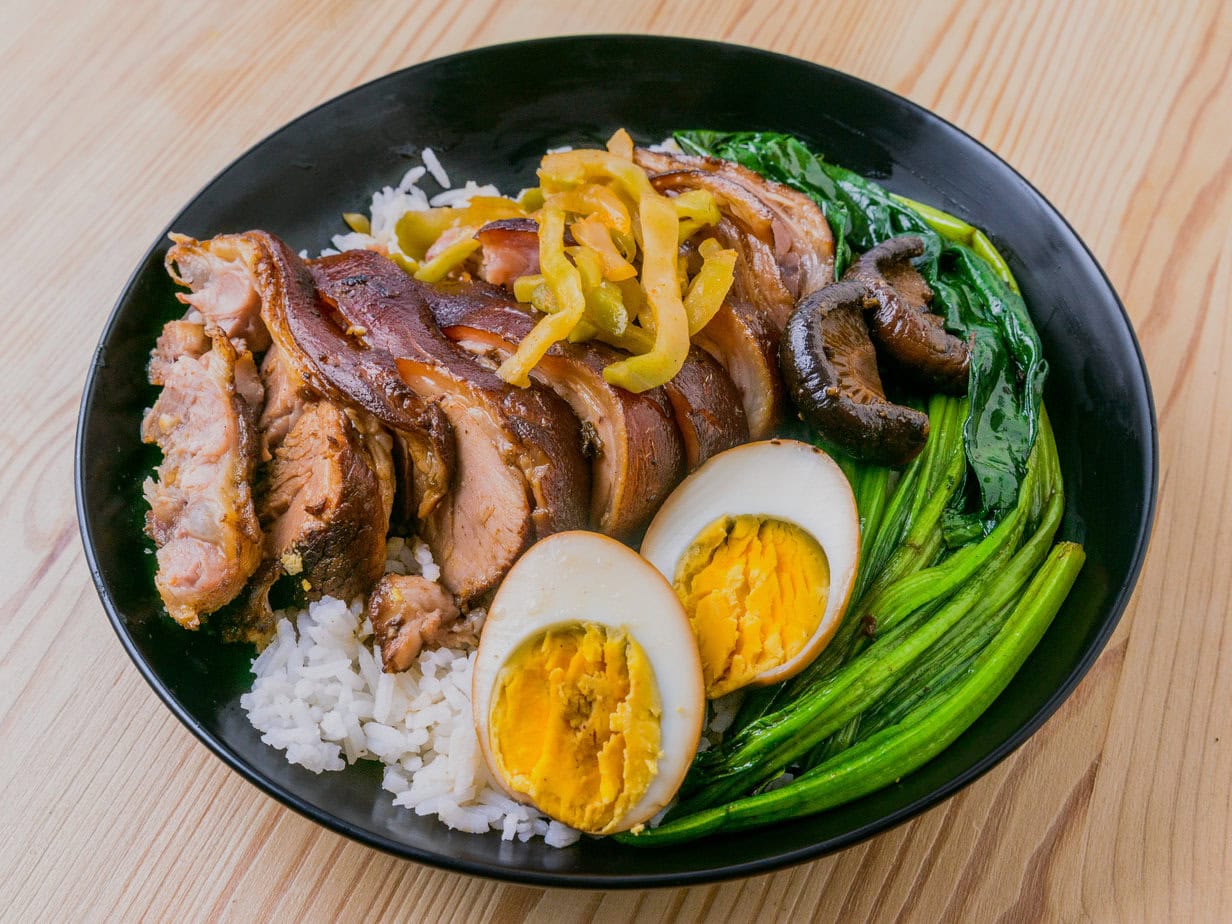
Traditionalists let the eggs braise from the first simmer, savoring those firm yolks ringed with caramel that recall childhood ; younger cooks sometimes prefer to add soft-boiled eggs at the end for a runny center. Either way, skipping the caramelization, opting for an « express » cook, or neglecting the herb paste is to forgo the soul of the dish.
Serving rituals
The stew arrives in a generous bowl, its surface gleaming with fragrant fat. Poured over steamed jasmine rice, the grains soak up the sweet-salty juices. On many tables, a small bowl of bird’s-eye chiles in vinegar, or a quick garlic-chile sauce, cuts through the richness with bright heat.
Within a full Thai meal, moo palo serves as a point of balance between a fiery holy basil stir-fry and a tangy tom yum, yet it stands perfectly on its own, especially after a night’s rest that intensifies its flavors.
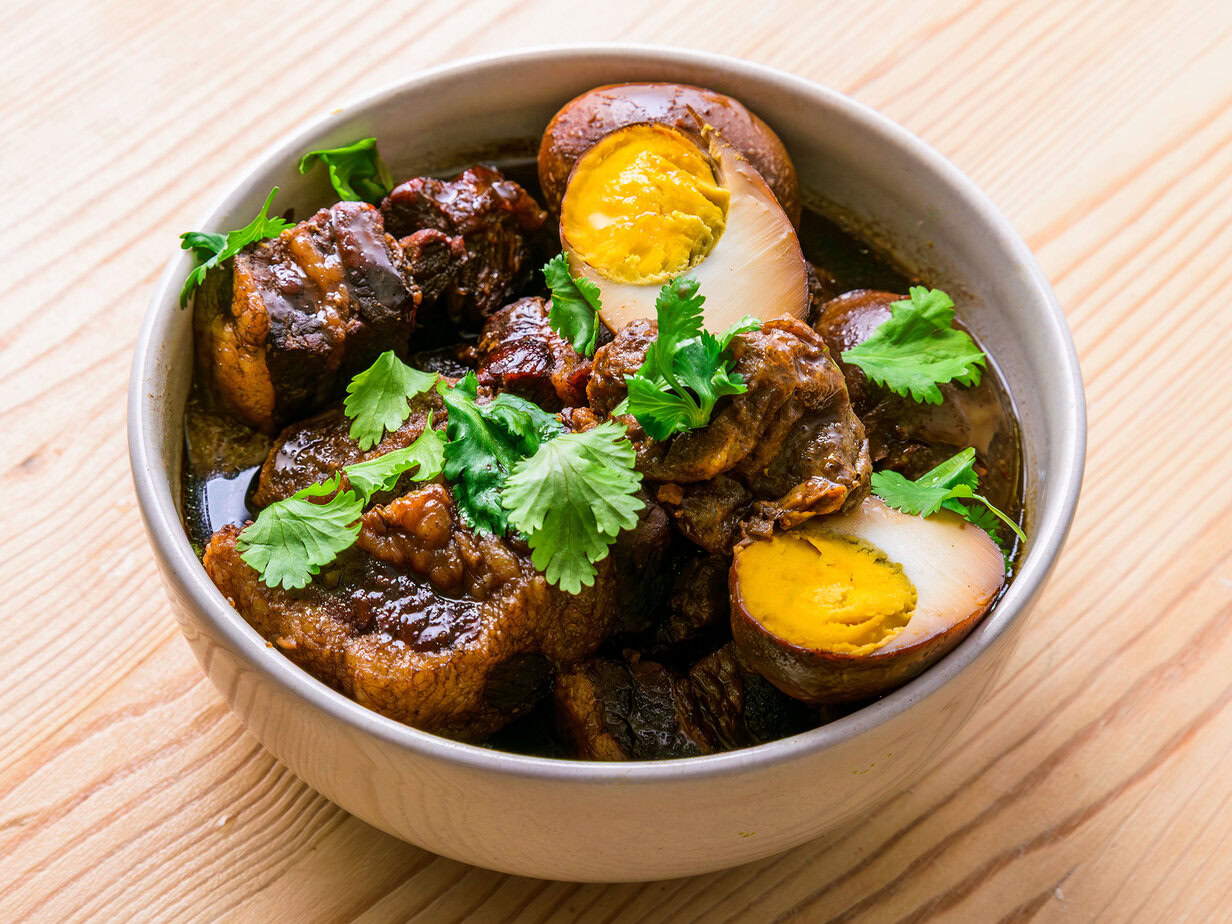
Ingredients
- 1 tablespoon Chinese five-spice powder
- 1 stick cinnamon
- 4 pods star anise
- 3 roots coriander lightly crushed; coriander stems can be used instead
- 24 cloves Thai garlic lightly crushed; if using Western garlic, halve the amount
- 1 teaspoon white peppercorns crushed
- 0.5 teaspoon salt
- 2 tablespoons rice bran oil or neutral oil
- 120 g palm sugar
- 2 teaspoons dark soy sauce
- 500 g pork belly cut into 2.5 cm cubes
- 5 hard-boiled duck eggs or chicken eggs
- 4 tablespoons light soy sauce
- 12 fried tofu puffs
- 1 L water
- fresh coriander for serving
Instructions
Preparation
- Rinse the pork belly, remove the tough rind, and cut into 2.5 cm cubes.500 g pork belly
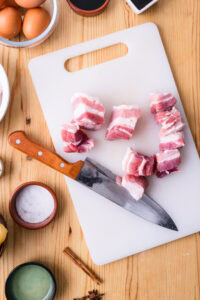
- Blanch the tofu puffs in boiling water for 3 minutes to remove excess oil.12 fried tofu puffs, 1 L water
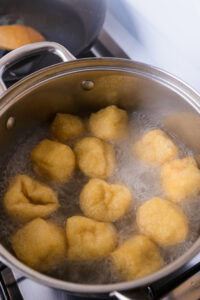
- In a saucepan, melt the palm sugar until a dark caramel forms. Deglaze with about 2 tablespoons of water, then add the dark soy sauce and light soy sauce.120 g palm sugar, 2 teaspoons dark soy sauce, 4 tablespoons light soy sauce
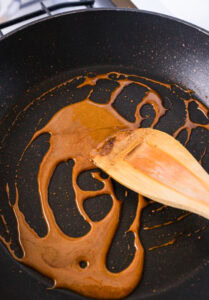
- Add the coriander roots, garlic, white pepper, pork belly, and eggs. Sprinkle with the five-spice powder and stir-fry for 5 to 10 minutes until deeply browned.3 roots coriander, 24 cloves Thai garlic, 1 teaspoon white peppercorns, 5 hard-boiled duck eggs, 1 tablespoon Chinese five-spice powder

- Transfer to a pot, pour in 1 L of water, and skim off any foam. Add the star anise, cinnamon stick, and salt; simmer gently for at least 1 hour, until the meat is tender.4 pods star anise, 1 stick cinnamon, 0.5 teaspoon salt
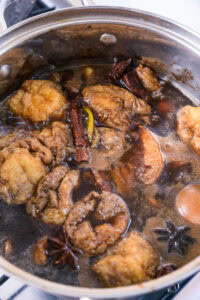
- Taste and adjust seasoning as needed, then serve piping hot, garnished with fresh coriander.fresh coriander
Notes
Nutrition
Culinary sources
• Authentic Moo Palo Recipe (Braised Pork Belly) – Reddit (English)
• Moo Palo: The Thai Pork Belly Stew – Tasting Table (English)
• “Palo” Eggs (ไข่พะโล้) – Institute of Nutrition, Mahidol University (Thai)
• History of “ไข่พะโล้”: a very popular dish in Thailand, but actually not Thai – Sanook (Thai)
• Moo Palo Recipe (Thai Pork Belly and Egg Stew) – Serious Eats (English)
• Traditional “ไข่พะโล้” Recipe: Classic Thai Method – TrueID (Thai)
• Moo Hong Is Not Moo Palo – Seabridge (Thai)
• Traditional, Fragrant “ไข่พะโล้,” Suitable for All Children – theAsianparent (Thai)
• Thai Southern-Style Pork Stew with Egg – Reddit (English)
• “พะโล้เด็กเพชร”: a palo without spices — a familiar old taste – Facebook (Thai)
• Moo Hong – Thai Pork Belly Stew – Simply Suwanee (English)
